Back in September 2014 I unexpectedly walked into the middle of what, for Gower at least, registered as a pretty major dispute. Successive high tides and storm surges had finally broken through a weak point in the mediaeval seawall at Cwm Ivy, flooding freshwater marsh and grazing pasture behind. In the process a public footpath had been washed away and various management bodies (National Trust, Swansea Council and Natural Resources Wales) were forced into a series of decisions which are likely to face large swathes of the country over the next few years if sea levels continue to rise. Should money and resources be poured into strengthening existing defences in an effort to hold the current line, or more controversially perhaps should we admit defeat, surrender land and defend from a new retreated position. That surrendered land not only then acts as its own natural defence but in the process creates brand new wildlife rich habitat which we can all enjoy. Of course if it’s your land or property being surrendered than your viewpoint will undoubtedly be different but with limited resources there is only so much that can, or indeed is practical, to be done. Titchwell in Norfolk is a prime example where moving the defended line inland has worked wonders both for nature and the longevity of defences, and now it’s the turn of Cwm Ivy. In a first for Wales the original breach has been allowed to widen forming a brand new area of salt marsh behind it. Successive high tides have brought in huge quantities of silt, killing off existing vegetation and beginning the transformation process that will see Cwm Ivy return to a state not witnessed for hundreds of years. Having born witness to the very early stages of this process I was eager to revisit this weekend to see what just fourteen months of Mother Nature being left to her own devices could achieve. The results were startling.

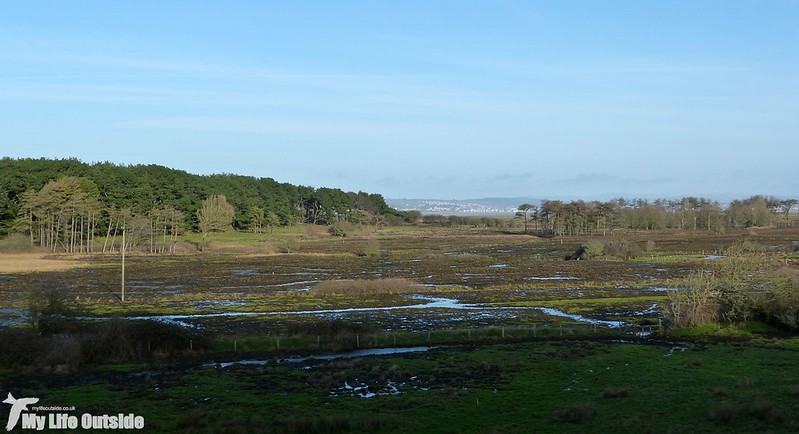
What I don’t think I’d fully appreciated in those early days was quite how large the area of new salt marsh would be. In living memory Cwm Ivy has always been drained so to see virtually the entire valley covered with mud and new pools was something of a shock to the system. I’d like to stress a good shock however as it was immediately obvious that this new landscape was already far richer and beneficial to wildlife than the old Cwm Ivy had ever been. On our walk down from the car we’d already spotted a pair of Buzzards and distant Sparrowhawk and they were soon added to by another Sparrowhawk (female this time) and a Kestrel over the marsh itself. Prey items for the Sprawks were in no short supply with flocks of both Starling and Pied Wagtail numbering at least thirty birds apiece. Then came the larger stuff including several Pheasants, two Little Egrets plus a rather lovely Green Woodpecker.
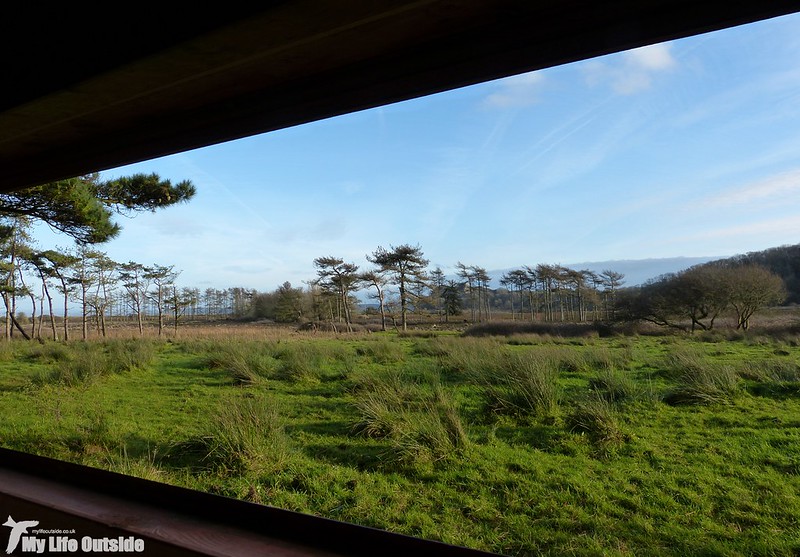
That latter sighting came from one of two newly constructed hides (number two should be open soon) the view from which can be seen above. Settling down in light and well constructed surroundings I immediately felt at home and with such expansive views can easily imagine this becoming one of my regular haunts. An inviting manmade Osprey nest hints at possible future glory but in the here and now a flash of movement really cemented this place in my thoughts. Looking closer I could scarcely believe it as a huge dog Otter ran along the tree line before disappearing into a ditch. Gobsmacked just about sums it up. I’ve long heard tails of Otters being present on both sides of the Burry here but had never before been lucky enough to see one for myself. Until now that is. It was a stunning animal, sleek, large and running with a purpose that perhaps suggests this is a regular haunt rather than some speculative outing. Certainly the various ditches and pools look like ideal hunting grounds particularly if the retreating tide has a habit of stranding fish within them.
As best I can tell the only way for an Otter to enter and leave Cwm Ivy is via the seawall breach so it was to there we headed next. Hoping to spot the animal on its way back out was always a little far fetched and in the end we didn’t manage to grab a second sighting. There were however several sets of footprints which look about right for Otter.

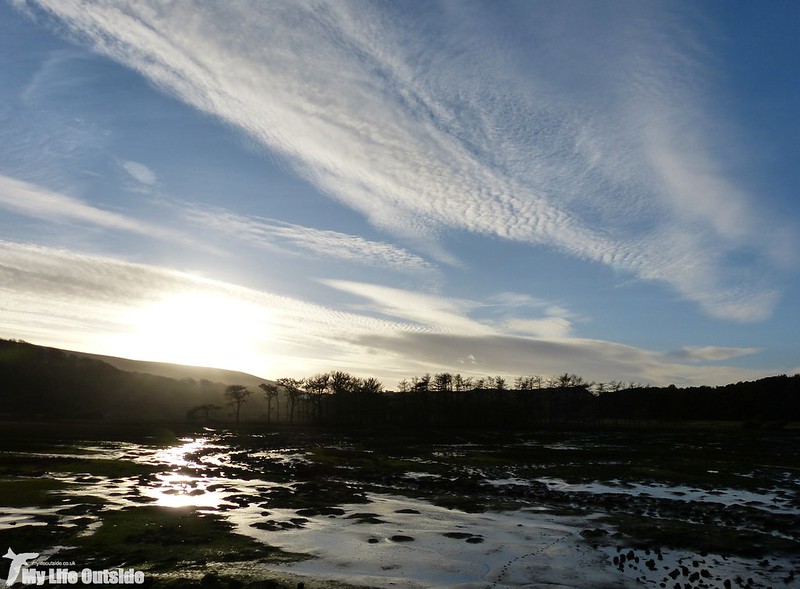
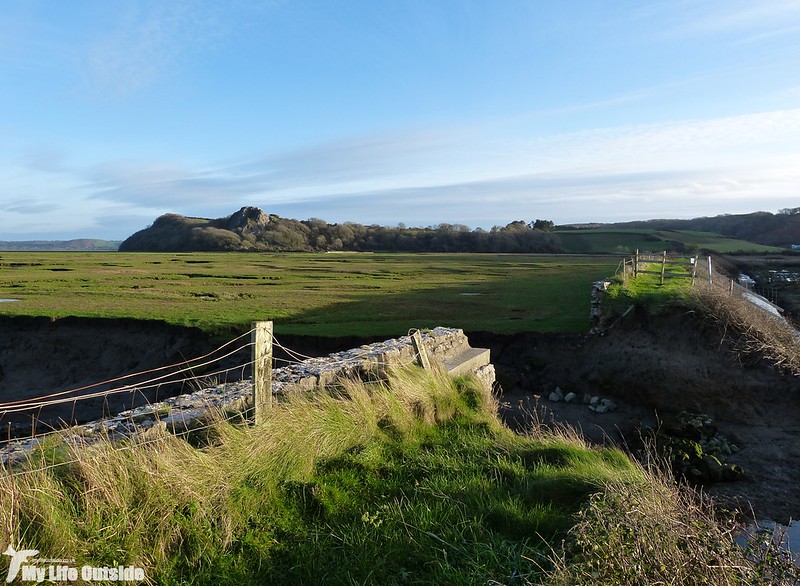
In failing light we attempted the walk out to Whiteford Point but ultimately had to turn back about half a mile short despite it being only four in the afternoon. Roll on longer days that’s all I can say. Our walk through the forestry did deliver a small flock of Long-tailed Tits however plus a mixed flock which included singles of both Chiffchaff and Goldcrest. There was also an opportunity to get relatively close to this Stonechat although a little of that earlier sunshine wouldn’t have gone amiss.
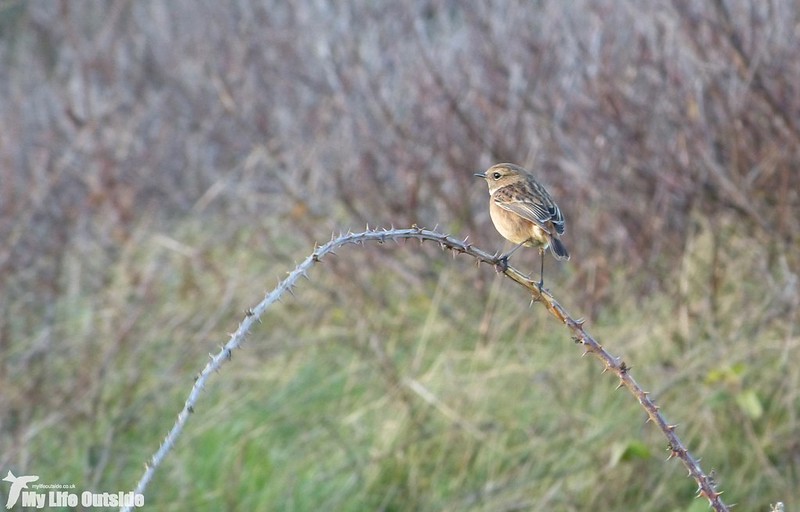
Summing up then I must say that as it stands, the transformation of Cwm Ivy Marsh gets a massive thumbs up from me. I hope that the National Trust continue to develop the site and would put a wader scrape outside the first hide top of that agenda. The possibilities if done well could be immense. On the negative side there is no escaping the thorny issue of that lost right of way which could be resolved via the addition of a bridge or two. Looking at the work involved though this would likely be expensive and complex which may, given the expected impact of further sea rises, ultimately prove short lived. Investing that money elsewhere could bring far greater benefits both to the people and wildlife which call Gower home.



0 Comments